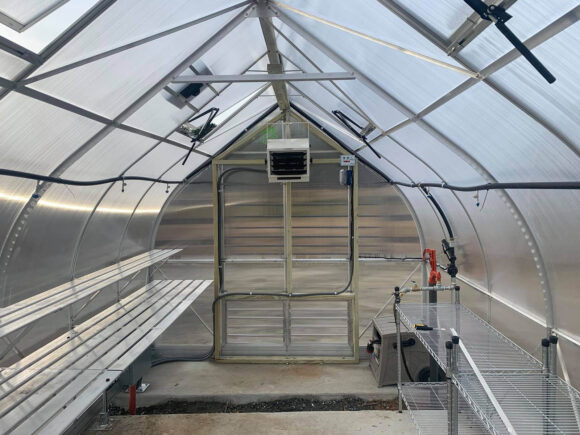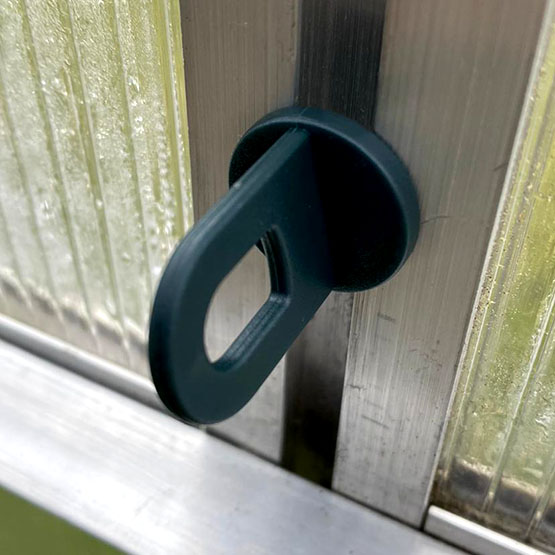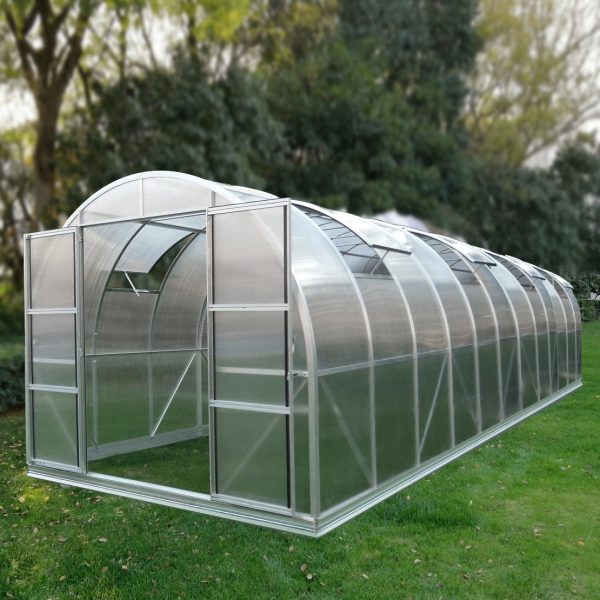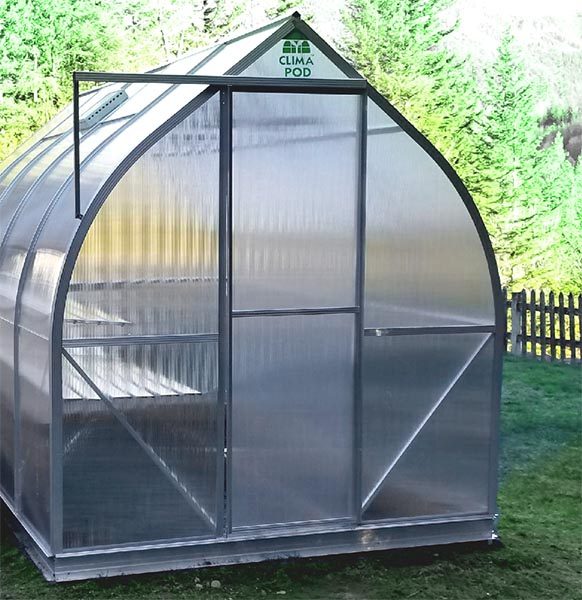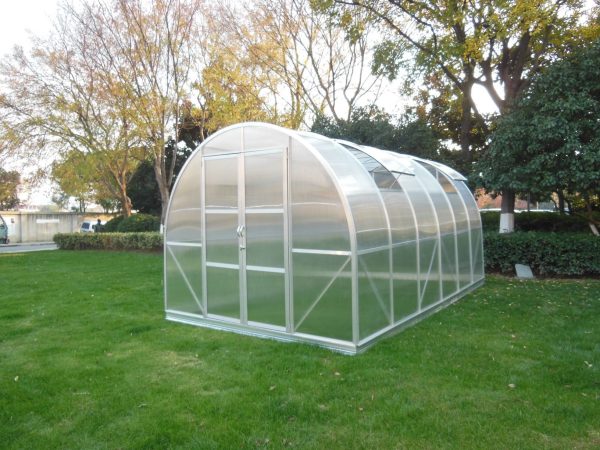Correct conservation of the greenhouse for the winter is the key to its long service life and good harvests. What and when should be done with your greenhouse in the fall so that it does not turn into a breeding ground for diseases and does not fall apart prematurely?
Autumn Greenhouse Work
First you need to understand that you have to maintain the greenhouse every year. And it does not matter which model you have. Both wooden, film-covered, and polycarbonate, and heated greenhouses expect similar work from you, which should not be missed.
Important: Remove all plant debris from the greenhouse before starting seasonal greenhouse cleaning. At low temperatures, plants will still not give new flowers and ovaries, but they will bother you. In addition, repair anything that was collected, remove supports, bush holders and paved paths or ridge stops.
Disconnect electricity and remove greenhouse sensors in the fall
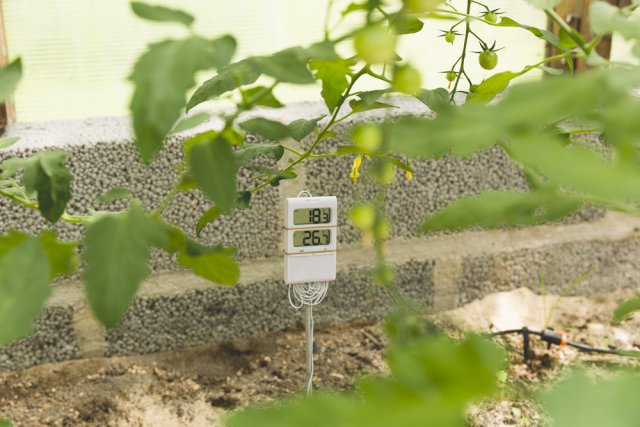
If a light or electrical heating system is installed in your greenhouse, temperature and humidity sensors are installed in it, then everything must be de-energized for the winter. Temperature drops and dampness of the off-season can ruin expensive equipment, so all sensors must be removed and placed in a dry, heated room.
Flush and dry the greenhouse irrigation system before winter

Freezing water can break pipes and joints, which means that the irrigation system, if you have one, must be dried for the winter. However, clean and decontaminate the pipes before venting.
If there are barrels of water in the greenhouse in the summer, empty them and disinfect them with a similar agent, and leave them empty for the winter. It is also advisable to remove and remove drip tapes from drip irrigation systems.
Change or disinfect the soil inside the greenhouse
The soil in the greenhouse is actively exploited, accumulating the remains of fungicides, insecticides, fertilizers and salts. Because of this, for several years it becomes unsuitable for growing plants and turns into a breeding ground for diseases and pests. The best solution would be to change the soil every 2-3 years. It is necessary to remove a layer 25-30 cm thick (on the bayonet of a shovel), and before that you need to remove the mulch, if any.
If it is impossible to replace the greenhouse soil, it will have to be reanimated. To begin with, disinfect the soil with biological products, which, in addition to suppressing microorganisms, heal the soil.
The treatment can be repeated in the spring. Then add 40-50 kg of compost or rotted manure for each square meter and carry out a deep two-level digging. Then spill the soil with preparations that accelerate the decomposition and humification of plant residues.
For those who are not afraid to put in extra effort, building warm compost beds in the greenhouse would be a good option. To do this, a layer of fresh manure 15-25 cm thick is introduced into the dug trenches, a layer of plant residues 25-30 cm thick on top, and at the end 20 cm of soil or ready-made compost is poured. During the fall and early spring, the contents of the trenches will begin to decompose, and in the spring you will receive a ready-made warm bed with fertile soil. Read also Biological Heating for Polycarbonate Greenhouse.
If you freed the greenhouse from planting already at the beginning of September, you can improve the soil in it with the help of siderates. Plant oil radish, oats, mustard or other fast-growing cold-resistant green manure, and just before the very cold, mow the green mass and embed it in the soil.
Apply fertilizer
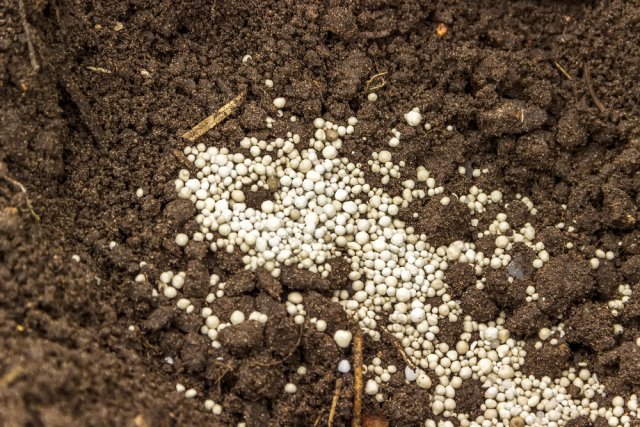
It is worth adding not only organic matter to the soil in the fall, but also complex mineral fertilizers. If your greenhouse stays covered all year round and is not exposed to rain and snow, you can apply potash and phosphate fertilizers already in September-October. They will gradually dissolve in moist soil, but will not wash out of it and will be available to plants in the spring. On average, 40-60 g of superphosphate and 25-30 g of potassium salt or potassium sulfate are added per 1 square meter of soil.
Wash and disinfect the frame and walls
To get rid of fungi, bacteria and hibernating pests, the walls of the greenhouse must be thoroughly washed with soapy water, both from the inside and outside.
Ventilate the greenhouse
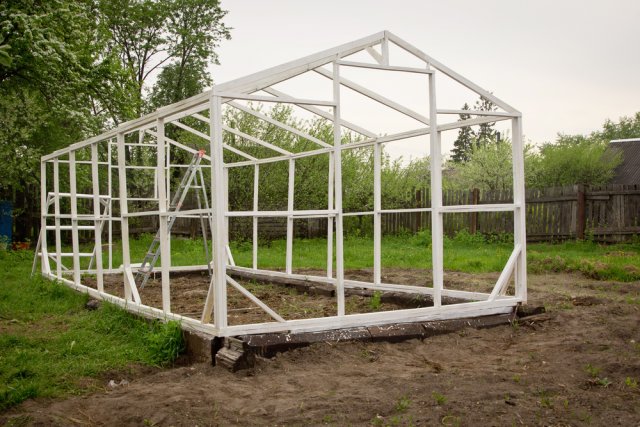
After autumn disinfection, the greenhouse must be ventilated by opening the doors and vents wide open.
By the way, some gardeners disassemble the ends of polycarbonate greenhouses for the cold season, and collect them back in late February or early March, i.e. 3-4 weeks before the start of work in the greenhouse.
Install greenhouse supports in the fall
If everything is simple with film greenhouses, and for the winter the covering material is removed from them and stored separately, then there are nuances with polycarbonate. It makes no sense to take it off every year, but leaving it on the roof is dangerous – it can break under a thick layer of snow.
To prevent this from happening, you need to either regularly clean the snow from the greenhouse, or install supports inside. The first option is more difficult, but more effective – coming to the garden after every heavy snowfall and cleaning everything is not easy, but this way you will definitely protect the greenhouse from damage. If this is not possible, put together structures that look like giant mops or letters of T and set them so that a piece of polycarbonate on the roof slope rests on the horizontal bar.
Note: ClimaPod Greenhouses can handle snow loads up to 15″, but we recommend removing 12″ snow from the roof.
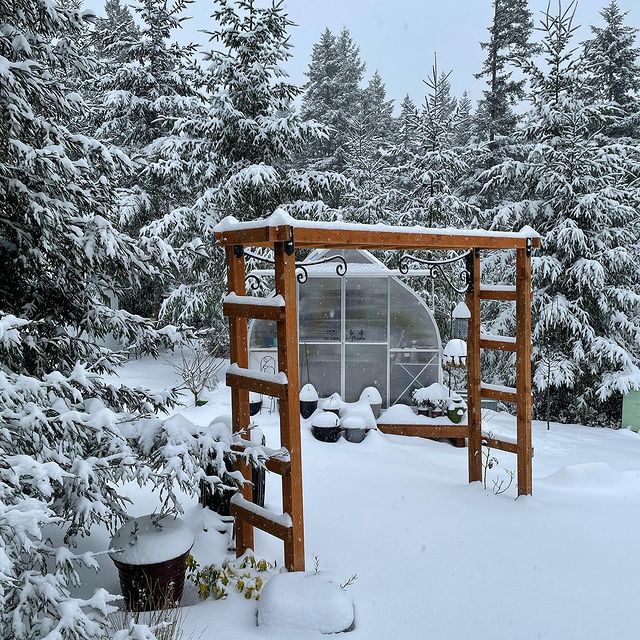
Preparing your greenhouse for winter can take you a whole weekend, but you can’t skip it. In addition, all work falls on the autumn period after the harvest, when there are fewer and fewer cases on the site. Believe, this time will not be wasted, and in the spring you will be able to plant greens and seedlings in a clean and safe greenhouse with peace of mind.

